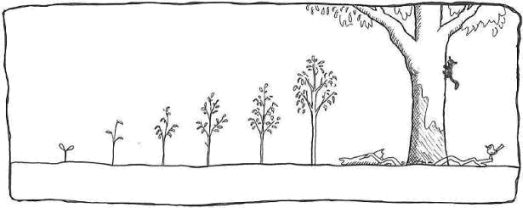Benefits for landscapes and wildlife

Regrowing native forests can bring a range of benefits for landscapes and wildlife, especially in heavily cleared areas. Benefits include:
- providing food, shelter and breeding sites for native animals
- increasing the ability of native species to move across landscapes
- helping to lessen the impact of forest clearing on populations of forest species
- increasing the extent of high-quality forest habitat over the longer term
- maintaining healthy populations of native species
- sustaining the ecological services provided by forests and by the species they support.
Maximising regrowth benefits: factors to consider
Landscapes and wildlife benefit most when native forest regrowth mitigates the impact of past clearing. This depends on what the regrowth is like, where the regrowth is occurring and when regrowth happens.
What the regrowth is like
When considering what the regrowth is like you should include:
- land management practices (historic and current) at the site. See the management guides for advice about managing native forest regrowth to maximize the benefits to wildlife.
- the type of forest that is regrowing. Different species rely on different types of forest for their habitat and some habitats are much rarer than others. This is partly because clearing tends to target particular forest types. Regrowth of heavily cleared forest types is likely to have greater benefit for wildlife and to landscape health than regrowth of forest types that are still common in the landscape.
Where the regrowth is occurring
When considering where the regrowth is occurring you should include:
- the potential for regrowth to increase the total amount of native forest in the landscape. Regrowth in a landscape with little native vegetation will have more value than regrowth in a largely intact landscape.
- the accessibility of regrowth to native species. Regrowth that is nearer to existing native forest has greater potential to provide habitat for wildlife than regrowth that is more isolated from other patches of forest.
- the effect of regrowth on connectivity between other habitat resources for native species. For example, regrowth may provide a corridor for forest animals to move safely between remnant forest areas.
When regrowth happens
You should consider when regrowth happens. Regrowth has the greatest potential to benefit biodiversity soon after clearing. Species tend to drop out of landscapes in the decades following clearing, so the sooner regrowth happens, the better.
More information
Use the regrowth benefits interactive map to find more information about sites of specific interest to you, and their suitability for regrowing native forest.


